Bell Textron have announced the unveiling of design concepts for new aircraft systems for military applications which would use Bell’s High-Speed Vertical Take-Off and Landing technology as the company continues its innovation of next generation vertical lift aircraft.
The firm say that High-Speed Vertical Take-Off and Landing (HSVTOL) technology blends the hover capability of a helicopter with the speed, range and survivability features of a fighter aircraft.
“Bell’s HSVTOL technology is a step change improvement in rotorcraft capabilities,” said Jason Hurst, vice president, Innovation.
“Our technology investments have reduced risk and prepared us for rapid development of HSVTOL in a digital engineering environment, leveraging experience from a robust past of technology exploration and close partnerships with the Department of Defense and Research Laboratories.”
According to Bell here, their HSVTOL design concepts include the following features:
- Low downwash hover capability
- Jet-like cruise speeds over 400 kts
- True runway independence and hover endurance
- Scalability to the range of missions from unmanned personnel recovery to tactical mobility
- Aircraft gross weights range from 4,000 lbs. to over 100,000 lbs.
Bell said in a statement:
“Bell’s HSVTOL capability is critical to future mission needs offering a range of aircraft systems with enhanced runway independence, aircraft survivability, mission flexibility and enhanced performance over legacy platforms. With the convergence of tiltrotor aircraft capabilities, digital flight control advancements and emerging propulsion technologies, Bell is primed to evolve HSVTOL technology for modern military missions to serve the next generation of warfighters.
Bell has explored high-speed vertical lift aircraft technology for more than 85 years, pioneering innovative VTOL configurations like the X-14, X-22, XV-3 and XV-15 for NASA, the U.S Army and U.S. Air Force. The lessons learned from the XV-3 and XV-15 supported the development of the Bell-Boeing V-22 Osprey tiltrotor, an invaluable platform that changed the way the U.S. military conducts amphibious assault, long range infiltration and exfiltration and resupply with a cruise speed and range twice that of helicopters it replaced.”


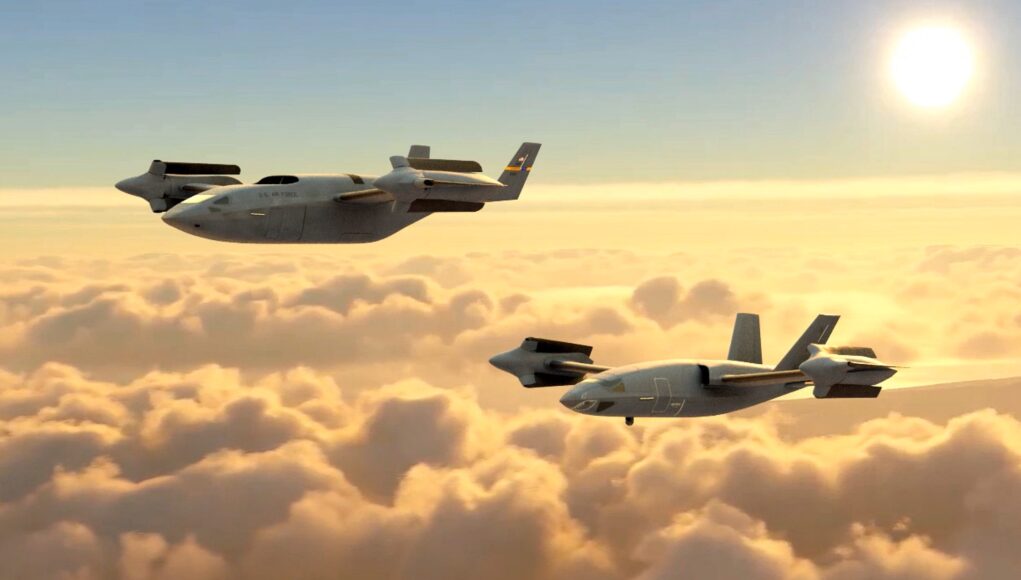
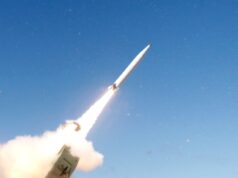
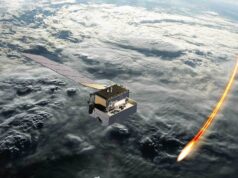
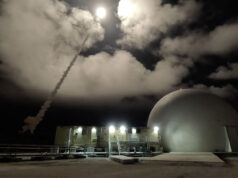


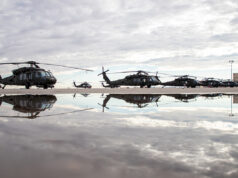

I wonder if one day these could replace F-35B for the RN carriers?
Not at those speeds….400knts + more likely to be helicopter replacements and provide A2A refuelling capabilities
Big one does look like Thunderbirds II though. F.A.B. virgil
Slightly off topic, I did a google after your post and came across this video and I have to say that the new version simply doesn’t have the presence or gravitas of the original:
https://www.youtube.com/watch?v=h08WtZH6mLg
The original version
https://www.youtube.com/watch?v=2lWNZowvWEk
The sad thing is that nothing we make will ever look like that. The Bell proposal looks good, but will it ever get onto production drawings, much less into service?
Even the technology looks better and more realistic in the original even the airliner which as a kid I thought rather over designed looks fantastic compared to the computer generated version where one might have thought the sky’s the limit.
Lol…as a kid I had Thunderbirds 2 and 4 as favourite toys. Not far off it now Farouk.
not all change is good.
I was going to say in reply to Graham only if they can operate in the Thunderbirds Universe where the ordinary laws of physics are shall we say nebulous.
In my mind, these concepts are in no way supposed to represent a replacement for F35. They would have an entirely different mission-set.
This is more likely to replace the likes of the Osprey, building on its capabilities but keeping the same fundamental role. The F35B is a fast jet fighter – a very different breed.
Bell always thinking ahead and would be a great supplement to the CAG boosting the endurance of F35’s so enhancing the capability of the limited numbers we will have onboard, Perhaps a longer ranged ASW too as the limited Merlins getting worked to death.
I have wondered how long it would be before somebody built a jet powered VTOL aircraft like the ones Gerry Anderson aired on his TV shows over 40 years ago
Its a great idea in theroy but dont hold your breath…ok, here goes: Trying to make a large jet powered VTOL, ie. something bigger than a V22 Osprey, is very difficult indeed (read: borderline impossible at current tech level) due to the weight, complexity, noise, heat output, hurricane-force downdraft and a near zero-survivability failure mode in the event of an engine out during hover. V22 Osprey and Chinook have a driveshaft linkage between the gearboxes and rotors so you can operate on one engine in an emergency and thats for landing, not taking off. replace the turbines and rotors on a V22 with pure jet engines and you end up with somthing thats very expensive, very loud, very fuel thirsty, very complex and, quite likely, very dangerous.
Bell are showing concepts here that still have rotors for lift (that can fold in when in forward flight so where does the forward thrust come from?) but this looks more complex (that word again…) than a Tiltrotor like a Bell V280 Valour which itself its just a protoype and a development of the V22 which took over 26 years to go from initial concept to being in service.
Still, gotta love Thunderbirds 😎
Yes I’m afraid these sort of vehicles are going to stay in the realms of Sci Fi till we’ll after I likely leave this planet certainly unless nuclear propulsion is allowed in the atmosphere (no chance in a civilised world) or fusion power both in small and ultra lightweight form. For lightweight drone form there may just be opportunities I guess and I presume that’s where Bell sees opportunities in the non long term.
From the images I’ve seen and this is probably pure speculation. I have yet to see a proper top or rear view of the concept. But from the above image the aircraft would likely have either a pair of just the one jet engine above the cabin, shown by the engine intakes. These must be dual mode engines, used to provide thrust plus a form of drive to the rotors. This could be via a drive shaft, hydraulics or electrical. There are pros and cons with each of the drive mechanisms. With a mechanical drive shaft you will need a series of gearboxes and drive shafts which adds weight. Hydraulic drive isn’t all that efficient and the hydraulics will need lots of cooling, which probably favours an electrical drive. But then you’d also need these to be clutched so that the generated thrust is not used by a power-turbine to spin the gearbox/pump/generator.
There’s really only been one purely jet powered fixed wing VTOL aircraft, that was designed to be a transport/cargo aircraft, which was the 1960’s Do31. But even with all the eight lift engines and the two Pegasus engines it had a paltry payload capacity. Time has moved on, as has engine technology, but you will still need to overcome the aircraft’s weight using thrust by more than a factor of 1 to have vertical lift. You just can’t ignore the fact that rotor blades are great at moving a very large amount of slow moving air to provide thrust. A high bypass ratio turbofan will generate the equivalent if not more thrust, but the jet stream has a very high velocity and therefore its “downwash” will be very large, ala Harrier.
The Bell proposed concepts are interesting. I’d like to see how they slow down the blades and then fold them in flight. Tilt-rotor aircraft will always be a compromise in regards to vertical lift and forward speed performance. The rotors themselves are the issue. By combining the two modes into one blade, it will limit the overall performance when in the vertical or forward flight modes. This is because the blade design has different needs depending on airspeed. You also have to make a decision on how much vertical thrust is needed to overcome the aircraft’s weight, as this will dictate the blade length and profile. Which also is compounded by the wingspan, how much lift is needed to be generated in forward flight and from what airspeed? By folding the blades out of the way and relying on engine thrust alone, should give the aircraft a better performance potential in forward flight, as it removes the blades generated and limiting drag.
The Fairey Rotodyne and also the proposed jet version Avro Rotodyne https://www.youtube.com/watch?v=VFk5Y_F-dwg would solve all the safety problems – engine failure – just autogyro to safety!
Yep, still my favorite. I really don’t know why Leonardo (Westlands) don’t reexamine the concept? The concept was proved to work well, the noise issue with the tip jets was in hand with a new design. It had speed, range and the ability to lift heavy underslung loads, with a large unobstructed cabin.
The convertiplane concept is significantly more efficient than other VTOL methods. It marries the capabilities of an autogyro with a helicopter. So you still have the very large vertical mass airflow for lifting heavy loads. Whilst being an autogyro, the rotor tips spin at near the same speed as the airspeed, so you don’t have the massive drag penalty. With today’s knowledge the Rotodyne could easily gain an extra 50 knots airspeed whilst flying at a higher altitude for longer.
I’m thinking of starting a crowdfunding group to build a modern Rotodyne, anybody interested?
Think you’ll find the proposed design has all of these….if you look at the image the tilt rotors are there (folded)..and thus will have interlinked drives and gearboxes, redundancy etc…this is really a faster, stealthier Osprey replacement with greater range….tilt rotor for vtol, and jet thrust for flight.
Can only imagine the complexity of the folding mechanisms…the Osprey is crazy enough but this takes it to another level. Far too complex in my mind.
The Dornier Do 31, it did fly with just Pegasus engines.
Have always wondered if it would have been suitable COD duties for the invincible class aircraft carriers.
You can see the Do31 in action in Amazon’s ‘The Man in the High Castle’ alt-history thriller.
Hi again, thank you for that link. Also have you come across the Canadair Dynavert Cl84 ( I think ) it flew and was demonstrated in the 1970s, it makes you wonder if it could be carried on board a Invincible class or HMS Hermes. It might have been able to undertake the AEW role of the seaking AEW helicopters and also air to air refuelling of the Harries.
The Canadair CL-84 was promoted for many roles, but sadly no orders were placed.
Talking of Canada, I had a nice flight in a float-equipped DHC Beaver a couple of years ago, also a turbine Otter of Harbour Air, BC. The company is planning an electrified fleet in the near(ish) future.
Hopefully they’ll have more success at getting them into service than they had with the V247.
Surly we should be able to smash this..
Rolls Royce have just created a turbofan engine hybrid generator the size of a large beer keg that produces 2.5 mega watts of power. We should easily be able to build a helo replacement using the twin turobofan engine and having 5 mega watts of juice to provide power for the ducted fans for vtol. Range and cruising speed will be great from the turbofan engines and a hole family of drones could be built using this tech for all manner of uses. They could start by just using a Britten Norman islander as a test bed swap out the existing engines duct tape some ducted fans to the side and see if it can take off. I’m sure we have some men in brown coats in a shed to try this.
Ooops for got the link to Rolls royce.
https://www.rolls-royce.com/media/press-releases/2021/22-07-2021-rr-generator-delivered-for-most-powerful-hybrid-electric-propulsion-system-in-aerospace.aspx
Interesting, I note they are also developing mini reactors too ostensibly for power generation, but that some have speculated suitable for energy generation for Space based propulsion.
Bit like the Bell X22 then?
https://media.techeblog.com/images/bell-x-22.jpg
Looking at it, I wonder what the unrefuelled range was – maybe to the airfield perimeter fence and back?
As it was only a prototype it didn’t carry much fuel. But Bell did prove that the concept worked.
It was supposed to hit 525kph (325mph) but maxed out at 370 (192mph). This may be down to the pretty weak engines it used, plus the blade profile design used in the fans. In the hover when it was in ground effect, it did tend to wander a lot, but it was no worse that helicopters of the time that used analogue flight computers and rate gyros. If it had a modern digital flight control system it would probably be rock steady. The test pilots said it was quite benign to fly.
It would be interesting to see what the aircraft could do when put through a CFD program and given some tweaks?
Bring back the Armstrong Whitworth 681!
Exactly if we had the imagination in the 60s we now have the tech to do this. And yes I do wish could make a universal vtol like Thunderbirds 2. Just swap the payload for the required mission.
Don’t forget the Fairey Rotodyne !
That basic concept is from what I read being re worked in the US though not convinced it will get beyond concept even with the advances since.
Those ncells for vtol
It said CRUISE speeds OVER 400kts. It did not mean that such aircraft could not achieve fighter speeds. It also said ” the speed, range and survivability features of a fighter aircraft.” I suspect this is merely a beginning.
That fuselage reminds me of the rumoured “Senior Citizen” stealth transport.
Looks like a hugely expensive development path for a rather complex design.
Can’t help thinking that the keep it simple stupid approach is the way to go.
You can guarantee that they are trying to shoehorn this tech’ into a UCAV too, thinking of the USMC and RN.
We are better off converting the carriers to cat and trap, use our ‘B’ F35’s and whatever Uncle Sam is going to deploy in the way of Carrier UCAS and Carrier refuelling, volume production discounts and full interoperability with the US is the way to go.
It would be nice if Mosquito can cover all the bases, but I think the ‘all things to all men’ approach could be a costly mistake. Making ‘Lanca’ anything but affordable. They should stick to an affordable and achievable RAF loyal wingman / UCAV.
Agree on Mosquito and LANCA. As far as I’m aware, they are?
Hi Daniele, let’s hope so mate. Carrier related UCAV’s are such a niche area, that a UK approach would be foolhardy.
Mosquito / Lanca need to be RAF focused and vitality, affordable in numbers, perhaps with a Maritime patrol and attack capability added to the remit.
I can foresee a force structure for 2035, that will probably be 150 Tempest and 200 capable British developed UCAV’s for the RAF.
The FAA will have 70 odd F35B’s and a mix of 60 plus US made UCAV’s and in flight refuelling drones.
I’d bite your hand off for that. That’s more combat aircraft than we have now in just the Tempests.
Should be doable Daniele, if we can’t order 150 Tempests, then we better not waste any more money on it and just plan for a follow on F35A order now
I would hope the arrival of Tempest will release F35B’s to the Navy and affordable UCAV’s should be available in quantity…..
We can hope mate…
Yes, there is always hope.
I just worry Tempest is another cut now for jam tomorrow, that never arrives.
What do we use with our expensive Cat and Traps? Just drones? It will be interesting to see what proposal(s) come up for the MoD request for a catapult system.
Spot on.
Why isn’t Britain looking into developing craft such as this? Considering we have the nous, and the technology to look at projects to improve upon what we/other may have.
Once upon a time, this country had all manner of ‘bods’ working away in laboratories, the length and breadth of the UK, coming up with all manner of ideas, concepts and designs for just about anything you could imagine.
Now we seem to simply ‘copy’ ideas from other countries, usually looking at doing things cheaper, therefore compromising the intention of the original design.
So is production and development dead in the UK?
Money.
Are you just trying to get someone to bite or is that a genuine question??
Someone to bite??
Project Tempest and Lanca would suggest otherwise Tom.
The problem with new technologies, is the crippling cost of development. If they have a Military application, then the UK and it’s allies (excluding the US) simply won’t order enough of project ‘Z’ to make it viable.
This will be the acid test for Tempest. They always used the rule of thumb that an order for 400, was the minimum number of a combat aircraft to make it viable.
It’s a very rough equation, because it doesn’t take in the complexity of the system, therefore the development cost.
‘Assuming’ this old metric still stands and the RAF receive 150 ish, then we will need to bring in other quantity buyers very soon, to keep the show on the road.
The Swedish will probably use the tech and engine to build a light single engine strike fighter.
Saudi Arabia could be a buyer for upwards of 80.
Europe is likely a non starter…
The far East is possibly the best bet, Singapore, Malaysia and Indonesia perhaps.
Hi JC
There are over 1,300 development companies in the UK, who work on defence projects.
More and more of these businesses spring up all the time. Maybe its just at the ‘lower end’, but lots of these company’s operate on a not what you know, but who you know basis.
I have witnessed this on at least 3 occasions, so it’s not improbable or unlikely, its real and happens all the time.
Committing to bigger contractors all the time, takes out lots of these developers. What is needed, is a more open honest approach when it comes to development, and not just going to the same old, who make billions from government contracts, whilst excluding smaller outfits through greed, corruption and … well whatever else.
Open up the development process to all relevant company’s in whatever field you are looking at. This can be done by incentivising the whole process, asking companies to ‘develop this for us’, and picking what is best for the UK forces.
The notion that development it hellishly expensive is bollocks! If a company or business wants a contract, they should be rewarded in stages, from inception to product testing and launching. (8 steps or so)
So you pick 2-3 companies from those who are competing for the contract, giving incentives for each successful stage.
Let the government ergo the military dictate the terms of what is required, and how much it will cost.
If you take tempest, the government slings millions upon millions at basically the same old businesses. There are so many development companies out there, that it makes a mockery of any ‘bidding process’, just going to same ol same old.
The feedback from the actual troops using copters and the NATO procurement programme that’s actually running is they dont want these bulky tilt rotor craft focusing on speed what they actually want is something that can land anywhere while lifting heavier loads.
Absolutely, keep it simple stupid…..
They don’t take much notice of serving soldiers anyhow. Remember the whole debacle with the Vertis body armour. Soldiers were reporting that they could not get up from the prone position, without trying to roll over on their side or back.
It was very poor, but it didn’t stop the MOD from having to fork out for thousands of sets of the useless stuff.
I think the ideas are still there, when there is a purpose as F1 shows it comes to fruition but the trouble is in defence most of the ideas are enormously expensive to produce so get lost in the process. In industry generally this Country or more significantly the investment Banks have been risk averse since I was a kid so much of the ideas and innovation ends up going abroad one way or another blue lasers a great example. One area where things are improving is now Space where the extensive reduction in costs to do so, increase in the market combined with (at last) Govt investment/support has allowed true innovation to literally get off the ground. A couple of the launchers are building the hydrogen tank within the oxygen tank (from memory) to help with cryogenic temperature control and rocket balance during the climb to orbit as fuel is burned which is just one sample of innovation being freed to show its worth at last.
Scroll down on Samad Aerospace timeline linked below. Not the only UK companies in this space. Others include Faradair and Vertical Aerospace. But the sensible focus for these companies is short haul commercial rather than military.
https://www.samadaerospace.com/timeline-2/
A development of the Dornier Do 31 experimental VTOL system? https://i.redd.it/erx2sqdwfcyy.jpg
Thunderbird 2 has a little ski slope and folding palm trees…… a bit limited on HMS Lizzie….. but the Millennium Falcon does not need the ski bit…. and can land vertically……👍
Just found this proposal which strikes me is a very innovative and interesting concept both for troop infiltration, but in particular potential to operate off of carriers or other vessels combining potential payload, speed, altitude, range and best of all solves the problem automatically of taking up deck or take off/landing space. Be intrigued to see if and how this concept/craft develops.
https://newatlas.com/aircraft/pterodynamics-transwing-evtol/
Cool concept.
Would obviously require a load of development to become a manned, airlift system.
One of the main drivers would probably be the rate at which battery technology improves.
I’m sure the folding wing will also need plenty of changes for it to be approved for manned flight too!
Flight Global published an article back in May for those interested in a little more on Bell’s concepts regarding this/these platform(s).
https://www.flightglobal.com/helicopters/us-air-force-signs-research-contract-for-bells-high-speed-vtol/143611.article
As I have said before-am fascinated by the depth of knowledge on this site on such specific fields as this. It is however sometimes intimidating for a happy generalist such as myself! So,leaving aside the technical challenges here(!) there must be a market for a VSTOL commercial aircraft that can service remote locations such as for example Tristan da Cunha, with a reasonable payload and of course a range that would at least allow for island hopping-in this case Ascension to Tristan, St Helena-Tristan etc.. In fact and come to think of it, the prize of the huge market for more accesible locations that don’t have airports is also there. The cost of building and maintaining long runways, the big footprint required- the savings here should be a massive incentive to develop such an airplane!
There is a definite market for a higher speed and longer ranged VTOL aircraft to replace domestic helicopters. There has been a noticeable drive in “fan in wing” VTOL aircraft research and development, such as the Lilium.
https://evtol.news/__media/Aircraft%20Directory%20Images/Lilium%20Jet/Lilium-5-seater-jet-first-flight-unmanned-May-4-2019-Munich-Germanym-.jpg
This is a commercial project and they are hoping it replaces the helicopter in the air taxi role etc. The aircraft uses a large number of small electric fans placed along the trailing edges of the canards and main wings. These fans are mounted like flaps, so that in forward flight they are in line with the airflow. When slowing down and going into the hover, the fans are moved to near 90 degrees to the horizontal. The fans then uses differential thrust to control movement.
This produces an aircraft that has pretty good and efficient flight characteristics especially in forward flight. The issue is that the mass air flow is quite low in the hover, so they won’t be able to lift much compared to an equivalent sized helicopter. As a passenger carrying aircraft this aircraft would be ideal for the commuter, as they would have a significant range and probably speed advantage over a helicopter. Due to its poorer vertical lift performance, it won’t be as good for moving bulky freight unless it had a good run up and you can forget using it for underslung stuff.
Personally, I still favour the Rotodyne concept!
Pelicans from halo